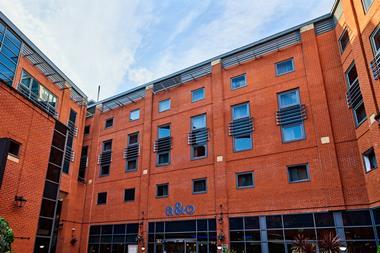Self storage provides secure do-it-yourself storage rooms for domestic and business customers for as long or short a period of time required. The customer hires their own private self-contained storage room and locks it with their own padlock.
Access to the stores is unlimited and modern facilities will offer 24-hour security, including personal access code systems which allow customers into the building all year round. Some stores also offer 24-hour customer access. This differs from traditional/containerised storage where access may only be by prior arrangement, and there are usually associated charges.
Customers can sign up for a unit and move in on the same day. The agreement is usually a monthly arrangement and can be terminated at short notice, typically seven days. There may be a minimum stay period, usually agreed as part of a special offer package. Special offers are a common feature of the market and may be seasonal, operated for new stores or simply a regular part of the operator's marketing strategy.
The occupational contracts are designed to fall outside the scope of landlord and tenant law, and particularly tenant protection relating to security of tenure and rent.
The buildings will be fitted out to provide a range of room sizes, typically from 10ft2 to over 500ft2.
The majority of a store's revenue will be derived from storage units but additional revenue from ‘retail' sales, such as insurance, boxes, locks and packing materials for customers can be significant. Some stores will also derive further revenues from the use of additional yard areas and space yet to be fitted out with self storage units for general/open storage, parking, renting of lorry trailer containers, mobile phone masts, etc.
Many stores are converted buildings, often former industrial or warehouse units, but many of the more modern facilities have been purpose built. Purpose built stores often look like conventional warehouse buildings but if the operator can obtain planning for a slightly taller building then this can add a further mezzanine level which may not be achievable in a conventional warehouse structure. This can significantly enhance revenue without adding much either to construction or operating costs.
A typical store may have a relatively small floorplate but the self storage space can be arranged over several additional mezzanine levels which can be erected relatively cheaply - traditional mezzanine levels in warehouse buildings tend to be of robust construction to reduce the number of supporting stanchions thereby creating clear useable space below. Over all floors the amount of net rentable storage space is often in the range of 40-50,000ft2 but, depending on the local market, sizes can vary from 25,000ft2 and below to over 100,000ft2.
Modern quality facilities will be fitted to the following specification:
What makes a good store good? This probably boils down to three factors; the quality of the building, the quality of the location, and the quality of the operation.
In terms of location, a store should ideally have good prominence to passing traffic as this is one of the best forms of marketing. As important is the need to be in the right market area. The ideal target market is a wealthy area with a high proportion of apartments and flats (ie, homes which may have limited storage areas) and an active and liquid property market combined with a high divorce rate. Bear in mind that part of the demand for self storage is event driven, eg, a house move, loft conversion, divorce, etc.
Of the above three factors, the operational element is clearly in the direct control of the building owner and experience indicates that the management of a store (either at store level or at group/head office level) can have a significant impact on trading performance. Clearly operating cost and revenue engineering strategies are vital but the professionalism of the on-site staff can be a significant influence on the customer's decision to take the space.
Conventionally, the customer base would be about 60-70% residential and the balance commercial customers; of the residential base about one-third would be short term (up to 12 weeks) event driven, one-third are medium-term users (three to 12 months), and one-third are long-term lifestyle customers who tend to be convenience
rather than price driven.
A store's revenue is dependent on unit mix, pricing and occupancy/fill rate. A new store of good quality will typically take 24-36 months to reach a stable trading position (although this period can vary considerably), but once a stable trading occupancy has been reached then a good store will typically have additional cashflow enhancement opportunities.
Operators will push the pricing to establish a price ceiling and try to enhance the unit mix (smaller units generate the highest rate per ft2), and over time a store will tend to find a greater percentage of the ‘sticky' lifestyle customers at the expense of the short termers and the commercial customers who are more price sensitive. As the mature position develops then customer churn and therefore rent discounting will decline in hand with increasing rates.
Oliver Close is a partner in valuation advisory services at Cushman & Wakefield in London












